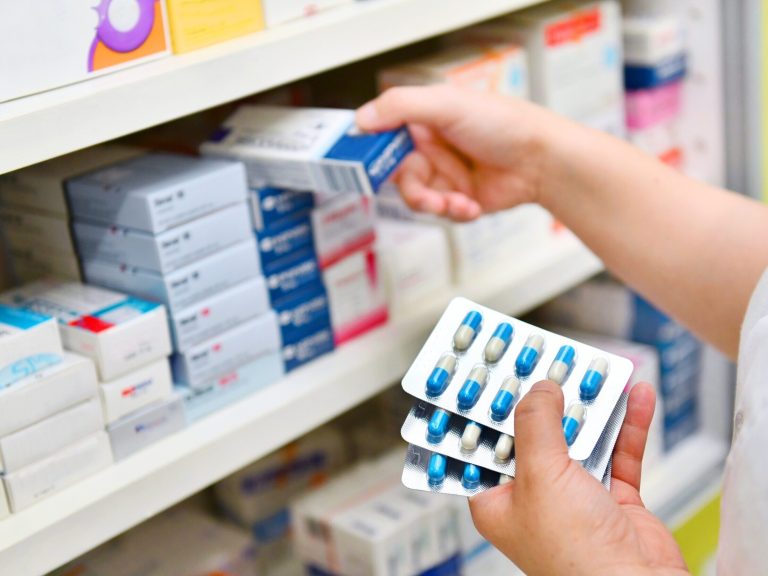Lipidogram – what kind of test is it, standards, price, preparation and indications

Lipidogram (lipid profile) is one of the laboratory tests that are performed from a blood sample. The lipidogram allows you to determine the concentration of total cholesterol, LDL cholesterol fraction, HDL cholesterol fraction, and triglycerides in the patient’s blood. The lipid profile result is an important diagnostic clue – it allows you to assess the risk of cardiovascular diseases, such as atherosclerosis, ischemic heart disease, myocardial infarction and stroke. How often should a lipid profile be performed? How to prepare for the test? We explain.
- Lipidogram (lipid profile) – what is this test?
- Lipidogram (lipid profile) – norms
- The level of “bad” LDL cholesterol and cardiovascular risk
- Lipidogram (lipid profile) – how to prepare for the test?
- Lipidogram (lipid profile) – test price
- Cardiovascular diseases – the most common cause of death in Poland and in the world
Cardiovascular diseases are diseases of the heart, arteries and veins (including lipid disorders related to abnormal cholesterol levels, hypertension, atherosclerosis, ischemic heart disease), which are at the top of the list of diseases most often leading to premature death. Cardiovascular diseases are called “silent killers” because they do not initially cause symptoms that require a visit to a doctor. The risk of their occurrence can be determined by assessing the lipid metabolism using a lipid profile test. Lipid profile results play an important role, among others: in assessing the risk of atherosclerosis, ischemic heart disease and myocardial infarction.
Lipidogram (lipid profile) – what is this test?
In human blood, cholesterol and triglycerides occur in free and protein-bound forms (lipoproteins). We distinguish:
-
HDL cholesterol fraction – high-density lipoprotein,
-
LDL cholesterol fraction – low-density lipoprotein,
-
VLDL cholesterol fraction – very low density lipoproteins,
-
IDL cholesterol fraction – intermediate density lipoproteins,
-
chylomicrons.
The lipid profile test is performed from a sample of the patient’s venous blood. A basic cholesterol test allows you to measure: total cholesterol, LDL cholesterol (“bad cholesterol”), HDL cholesterol (“good cholesterol”) and triglycerides.
Lipidogram is an important screening test, one of the basic diagnostic tests, as well as a test to determine the effectiveness of treatment, which should be performed regularly by men over 40 and women over 50. People who are at increased risk of developing cardiovascular diseases (e.g. overweight, obesity, diet rich in highly processed products and animal fats, genetic factors) should have their lipid profile tested after the age of 35.
Elevated total cholesterol, elevated LDL cholesterol and elevated triglycerides increase the risk of developing cardiovascular diseases. It’s worth knowing that not only LDL or “bad cholesterol” poses a threat to health. The risk of developing cardiovascular diseases and heart diseases is also increased by too low HDL cholesterol levels – good cholesterol. Even a slightly elevated cholesterol level should prompt you to change your diet and lifestyle.
Lipidogram (lipid profile) – norms
Currently applicable blood lipid concentration standards:
-
total cholesterol 3.0–4.9 mmol/l (114–190 mg/dl);
-
LDL cholesterol <3.0 mmol/l (115 mg/dl) - the norm for healthy people who do not have an increased risk of developing cardiovascular diseases;
-
women’s HDL cholesterol >1.3 mmol/l (50 mg/dl);
-
HDL cholesterol men >1.0 mmol/l (40 mg/dl);
-
triglycerides <1.7 mmol/l (150 mg/dl) fasting or <2.0 mmol/l (175 mg/dl) non-fasting.
The level of “bad” LDL cholesterol and cardiovascular risk
The LDL cholesterol level is an important diagnostic indicator that allows you to assess the risk of cardiovascular diseases. There are low, moderate, high, very high and extreme cardiovascular risk:
-
the norm for LDL cholesterol in the case of low cardiovascular risk (in healthy people) is <3.0 mmol/l (115 mg/dl);
-
the norm for LDL cholesterol in the case of moderate cardiovascular risk is <2.6 mmol/l (100 mg/dl);
-
the norm for LDL cholesterol in the case of high cardiovascular risk is <1.8 mmol/l (70 mg/dl);
-
the norm for LDL cholesterol in the case of very high cardiovascular risk is <1.4 mmol/l (55 mg/dl);
-
the norm for LDL cholesterol in the case of extreme cardiovascular risk is <1.0 mmol/l (40 mg/dl).
Lipidogram (lipid profile) – how to prepare for the test?
Preparation for a lipid profile test takes into account:
-
refraining from eating a meal 12-14 hours before the test – blood for the test is taken on an empty stomach;
-
giving up drinking alcohol 2-3 days before the test;
-
avoiding stressful situations before the examination.
Detection of lipid metabolism disorders is an indication to start treatment. In patients whose total cholesterol, HDL, LDL and triglyceride results are at or slightly above normal, conservative treatment is initiated. Conservative treatment of lipid metabolism disorders includes the use of an appropriate diet, weight loss, quitting smoking, stopping excessive alcohol consumption and increasing physical activity..
If conservative treatment turns out to be ineffective and despite following the doctor’s recommendations, the level of total cholesterol, HDL, LDL and triglycerides does not decrease, appropriate pharmacological treatment is necessary, which should be supported by diet, physical activity and efforts to reduce body weight. During drug treatment, you must stop smoking and drinking alcohol.
Lipidogram (lipid profile) – test price
A lipid profile test can be performed for free under the National Health Fund. Patients who cannot take advantage of a free test do not have to worry about very high expenses – in most laboratories, a lipid test costs PLN 20-40.
Cardiovascular diseases – the most common cause of death in Poland and in the world
The main cardiovascular risk factors are modifiable factors (factors that can be eliminated, reducing the risk of developing the disease), including:
-
inappropriate diet,
-
sedentary lifestyle,
-
high LDL cholesterol (“bad cholesterol”),
-
high triglyceride (TG) concentration,
-
hypertension,
-
prediabetes,
-
diabetes,
-
smoking,
-
alcohol abuse,
-
overweight and obesity.
Disorders of the body’s lipid metabolism can be effectively prevented by reducing the cardiovascular risk associated with the development of health- and life-threatening diseases.
Non-modifiable factors that increase the risk of developing cardiovascular diseases include:
-
age – men ≥45 years, women ≥55 years;
-
gender – high cholesterol is diagnosed more often in men over 40 than in premenopausal women;
-
genetic factors – the occurrence of ischemic heart disease and/or atherosclerotic arterial diseases in close family members.
It is worth knowing that lipid metabolism disorders are harmful, not only when the level of lipids in the blood is increased or is on the border of established norms. Lowering lipid levels below normal is also harmful to the body. Cholesterol plays an important role in the proper functioning of the body. Without it, important biological processes cannot take place (e.g. construction of cell membranes, production of cortisol, aldosterone, testosterone and estrogens, vitamin D synthesis, production of bile acids).
Sources:
-
Davidson, Internal diseases. Volume 2, Edra Urban & Partner Publishing House, 2020
-
Szczeklik A., Internal diseases, Volume I, Medycyna Practical Publishing House, Kraków, 2005
-
Aldona Dembińska-Kieć, Jerzy Naskalski, Bogdan Solnica, Laboratory diagnostics with elements of clinical biochemistry, Edra Urban & Partner Publishing House, Wrocław, 2017






